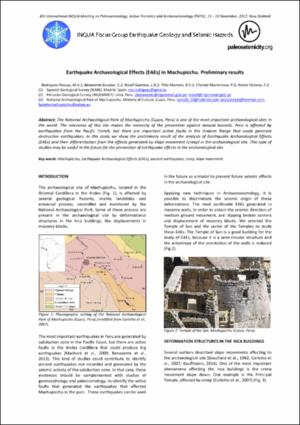Por favor, use este identificador para citar o enlazar este ítem:
https://hdl.handle.net/20.500.12544/2420Ficheros en este ítem:
| Fichero | Descripción | Tamaño | Formato | |
|---|---|---|---|---|
| Rodriguez-Earthquake_archaeological_effects_(EAEs)_Machupicchu.pdf | Artículo de congreso | 742.52 kB | Adobe PDF | Visualizar/Abrir |
Este ítem está sujeto a una licencia Creative Commons Licencia Creative Commons












